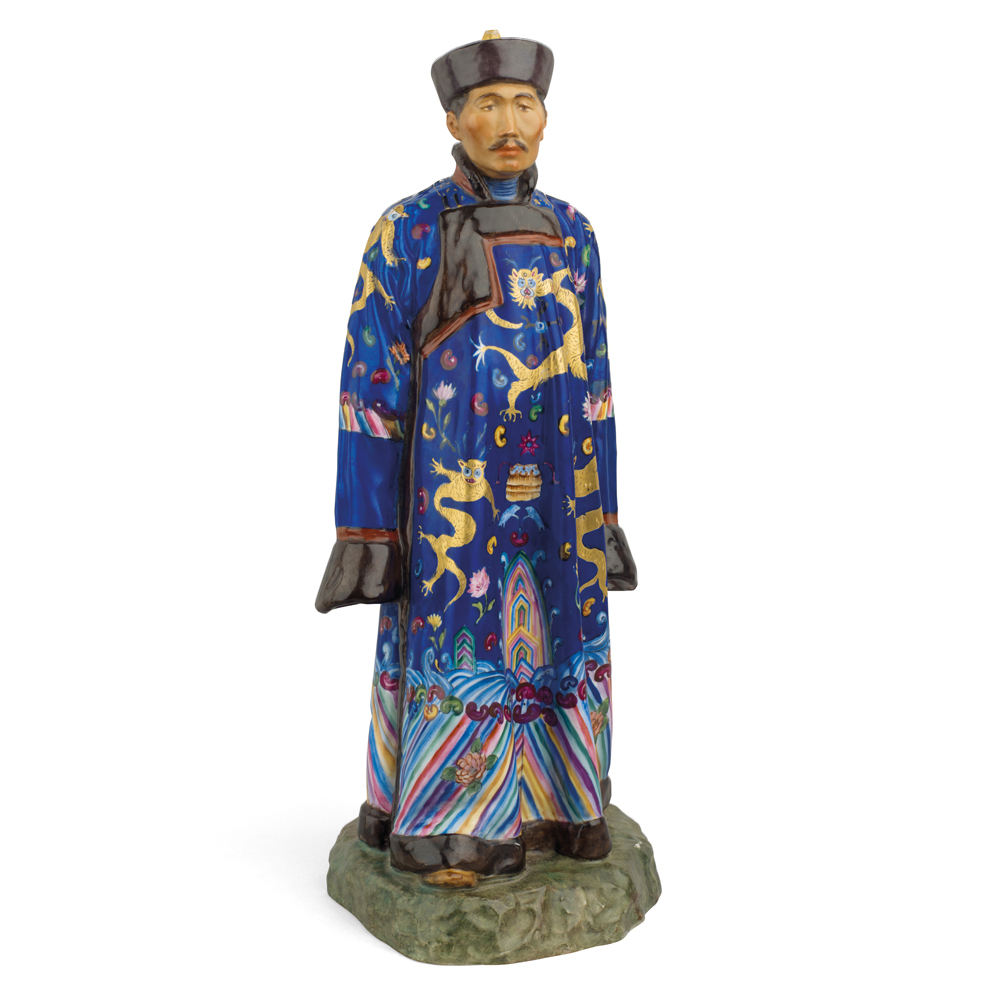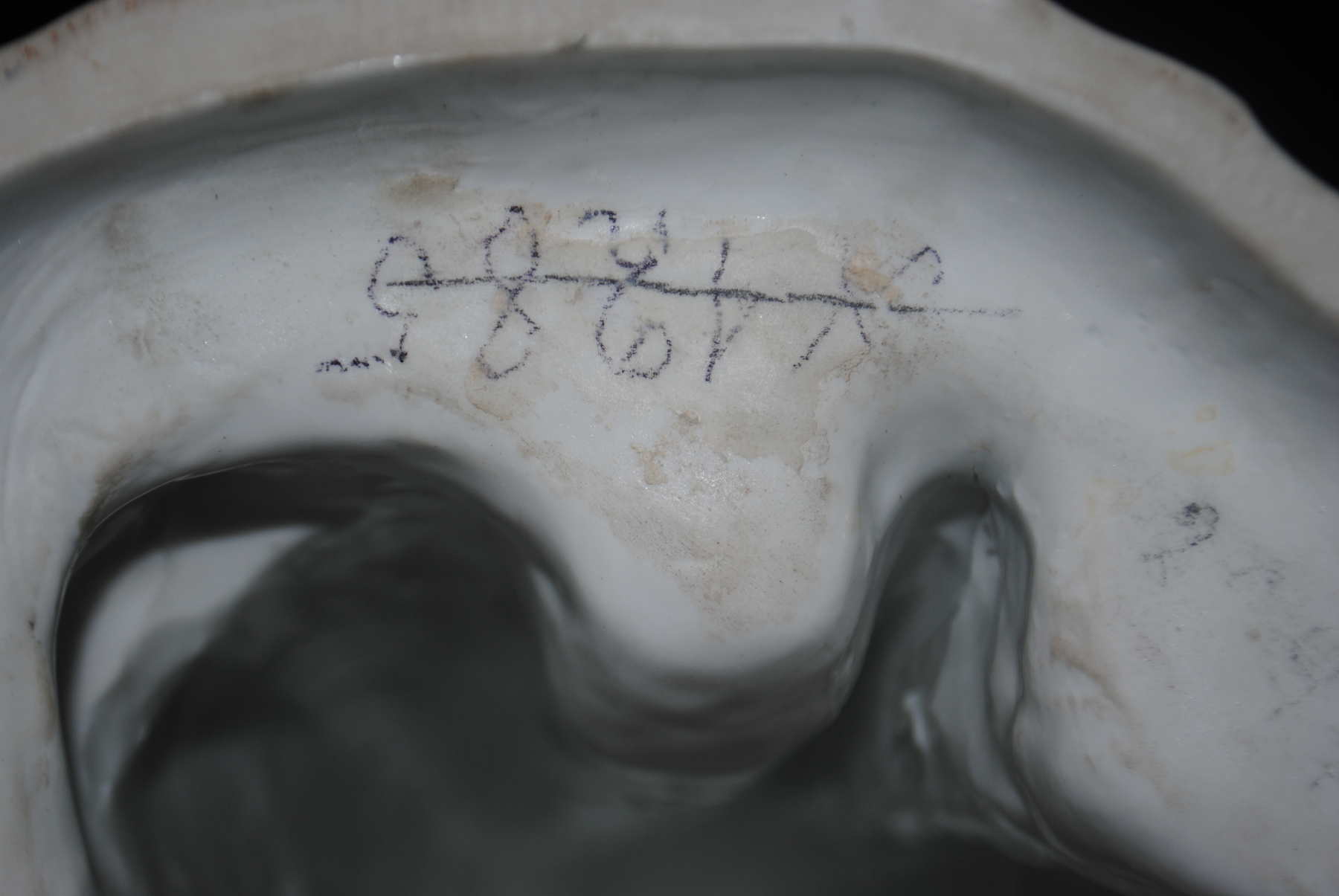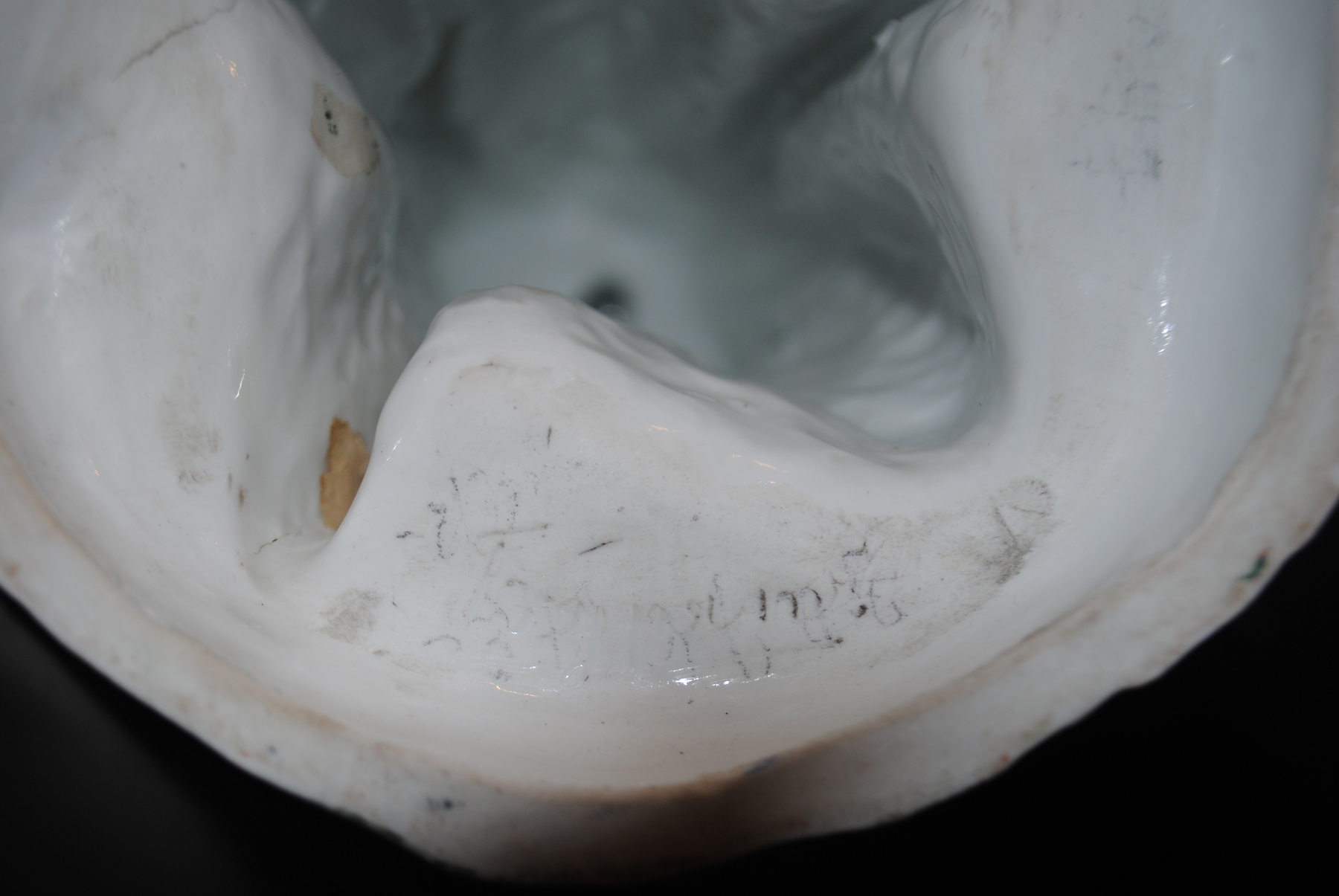26 November 2014 Russian Art Auctions
26 November 2014

320. A PORCELAIN FIGURINE OF A BURYAT MAN
AFTER A 1912 MODEL BY PAVEL KAMENSKY, IMPERIAL PORCELAIN MANUFACTORY, EARLY 20TH CENTURY
Height 40 cm.
10,000–15,000 GBP
Provenance: Acquired by the grandfather of the current
owner in the late 1920s–1930s.
Thence by descent.
Related literature: For similar works, see
E. Khmelnitskaya, Farforovaya Rossiya P.P. Kamenskogo,
Moscow, Lyubimaya Kniga, 2013, p. 318.
Realistically modelled wearing a blue Buryat long-sleeved robe (‘degel’) elaborately decorated with native Buddhist ornament, dragons and flowers and a hat, both with furry trims, on a green naturalistically shaped base, with incised inscription in Cyrillic on the underside “Buryat”.
The series “Peoples of Russia” by Kamensky were commissioned personally by Nicholas II from the Imperial Porcelain Factory in 1907 with the purpose of showing the cultural diversity of Imperial Russia. Kamensky, a well-known and established sculptor, collaborated with
the Imperial Manufactory on this project for the following decade. One of the distinctive qualities of his work is the highly realistic representation of figures, achieved through consultation with leading ethnological specialists, studies and censuses. The Buryat, in his bright
festive blue ‘degel’ with various Buddhist ornaments and characteristic face is a spectacular example of craftsmanship and a thorough knowledge of the subject.
The rare large scale of the present lot distinguishes it from other pieces in this renowned series. A comparable example of a Buryat man in terms of size and clothing is held in the collection of the State Hermitage Museum, inventory number: “ERF-3708” in Cyrillic.
This impressive porcelain figure of Buryat comes from the private collection of the German professor and diplomat Max Meyer (1886–1967). Having studied structural design at the Technical University in Munich, he was awarded a scholarship to the Maximilinaeum (Bavarian Parliament) and soon became a professor at the Bauhaus
school in Weimar, famous for such illustrious fellows as Walter Gropius, Paul Klee and Wassily Kandinsky. After the school was closed under pressure from the Nazi regime, which considered it a centre for communist intellectualism, Meyer moved to Moscow where he lived and worked for five years. It was during this time that he started collecting Russian works of art, acquiring numerous objects, including several lots offered here for sale (lots 319, 329, 335, 338, 376, 377, 379, 382).


Notes on symbols:
* Indicates 5% Import Duty Charge applies.
Ω Indicates 20% Import Duty Charge applies.
§ Indicates Artist's Resale Right applies.
† Indicates Standard VAT scheme applies, and the rate of 20% VAT will be charged on both hammer price and premium.